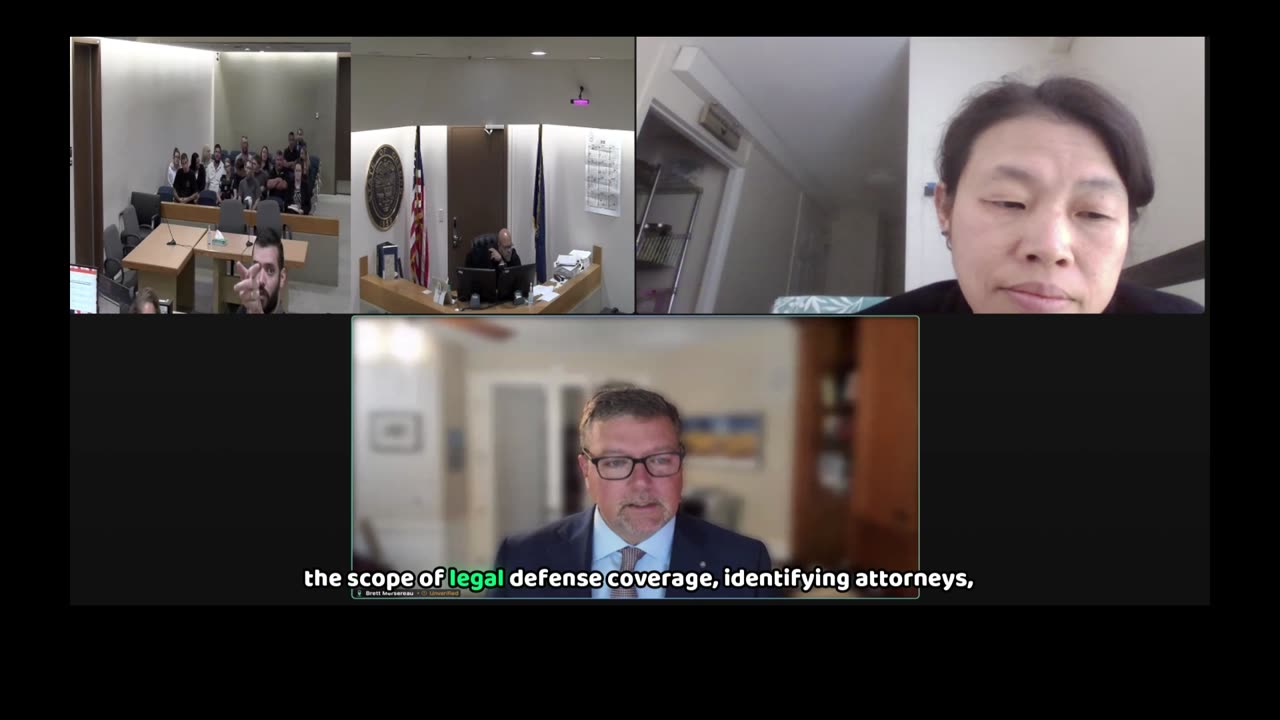Premium Only Content

PRR hearing on order already issued
Court hearing regarding motions to compel in two cases involving Jill Bong and the Douglas County School District, focusing on subpoenas and privilege issues.
Hearing Context and Motions
• The hearing addresses motions to compel documents related to subpoenas in two cases: 25CV16784 and 24CV52569.
• There is confusion regarding which case is being discussed, with both cases involving similar issues related to subpoenas.
• Ms. Bong is seeking documents that she claims are public records, while Mr. Mersereau argues that the requests include privileged communications.
Subpoena and Privilege Disputes
• Ms. Bong asserts that the documents requested from the school district's insurance company are relevant to her public records request, which the school district allegedly failed to respond to appropriately.
• Mr. Mersereau contends that the subpoenas seek privileged communications between him and his clients, as well as between the school district and its insurance provider.
• The court emphasizes that the motions to compel must not infringe on attorney-client privilege and must be relevant to the case at hand.
Legal Framework and Arguments
• The discussion references Oregon Rules of Civil Procedure (ORCP) 55, which requires that parties be notified of motions to compel.
• Mr. Mersereau argues that the subpoenas exceed the scope of the litigation and seek irrelevant documents, while Ms. Bong maintains that the documents are necessary to prove her claims regarding the school district's response to her public records request.
• The court seeks clarity on whether the documents in question are public records or privileged, noting that public records may not necessarily be relevant to the case.
Court's Ruling and Next Steps
• The court decides to grant the motion to compel, allowing for the production of documents that do not involve privileged communications or exceed the litigation's scope.
• Mr. Mersereau is tasked with preparing the orders reflecting the court's decision.
• The hearing concludes with both parties acknowledging the court's ruling and the need to narrow the scope of the subpoenas to comply with the court's directives.
This summary captures the essential elements of the hearing, including the legal arguments presented, the court's considerations regarding privilege and relevance, and the final ruling on the motions to compel.
-
 LIVE
LIVE
BlackDiamondGunsandGear
2 hours agoAre You that guy? / Carrying a Pocket Pistol /After Hours Armory
206 watching -
 LIVE
LIVE
Camhigby
2 hours agoLIVE - Riot Watch Portland, DC, NC
172 watching -
 2:54:58
2:54:58
CAMELOT331
4 hours agoYouTube Just Told Me I OWE THOUSANDS $ TO THEM... update
12.6K -
 DVR
DVR
Tundra Tactical
12 hours ago $0.60 earned🛑LIVE AT 9PM CST!! Your Government Hates Your Guns : DOJ Holds Firm On National FIREARMS ACT
7.96K -
 LIVE
LIVE
DLDAfterDark
2 hours ago $0.59 earnedAre YOU The Guy That Ruins Thanksgiving?? - God Guns & Gear
244 watching -
 2:58:31
2:58:31
NewsTreason
4 hours agoDECLAS w/ Rambo & Dave: Nuremberg 2.0 | MTG Exits Stage Left | Mamdani Psyop Confirmed, 8pm EST
53.4K55 -
 LIVE
LIVE
meleegames
3 hours agoSONG REQUESTS CLOSED - Melee Music - Beat Hazard 3 - Devil Inside
122 watching -

The Connect: With Johnny Mitchell
11 hours ago $1.28 earnedIs Garth Brooks A Serial Killer? Exposing The Dark Secrets Of Country Music's Biggest Star
8.16K2 -
 1:00:49
1:00:49
MattMorseTV
4 hours ago $76.40 earned🔴Massive VICTORY in the SUPREME COURT.🔴
97.4K120 -
 LIVE
LIVE
GritsGG
3 hours ago#1 Most Warzone Wins 4015+!
83 watching